Birch 12 String
So Long Pop.
March 9, 2010
The Apprentice
July 26, 2010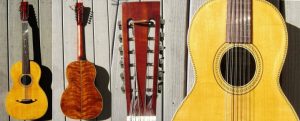 For the most part, I try to build my guitars like the old ones, but standards and expectations have changed a lot since the old days and I think that in order to sell guitars, the workmanship has to be a lot cleaner than it was in the old days. Not that I judge my guitars by the same standards as some of the small and medium shops of the day. When I look at a lot of the stuff that comes from some of the small and medium shops, it looks flat to me. It doesn’t have the depth of the old stuff. So many modern builders rely on CNC technology that their instruments are more hand assembled than hand made. Some folks think they look great, but I don’t see a lot of distinction between some of the high end American makers and some of the stuff being made in China.
For the most part, I try to build my guitars like the old ones, but standards and expectations have changed a lot since the old days and I think that in order to sell guitars, the workmanship has to be a lot cleaner than it was in the old days. Not that I judge my guitars by the same standards as some of the small and medium shops of the day. When I look at a lot of the stuff that comes from some of the small and medium shops, it looks flat to me. It doesn’t have the depth of the old stuff. So many modern builders rely on CNC technology that their instruments are more hand assembled than hand made. Some folks think they look great, but I don’t see a lot of distinction between some of the high end American makers and some of the stuff being made in China.
Enough of the ranting.
Occasionally I have a desire to build something “like an old guy”, build a great instrument but without the attention to details that is expected of the modern luthier. Don’t worry about cleaning out every little bit of glue on the inside of the box. Don’t worry about pencil lines on the inside of the box. Don’t worry about filling every single pore in the wood, and push the limits in terms of the lightness of the construction. I had a very rough winter and needed something a little cathartic to distract me.
Pat Conte is one of my favorite musicians alive today. Pat plays both blues and old time hillbilly music equally well, and he has mastered a variety of instruments, including fiddle, mandolin, banjo and six and 12 string guitars. He’s a great singer and interpreter of old music. I had talked to Pat a while back and he said he was interested in a BBQ Bob style 12 string. It seemed like Pat was the perfect fit for the kind of build that I wanted to do.
I started out looking really closely at the photos of BBQ Bob, trying to figure out if there were any details that I had missed from previous viewings. Judging from the shine on the sides of his guitar, it looked like birch with a heavily tinted finish. I had some nice flamed birch which I decided to use for the project. I also had some nice diagonal checkered purfling that I made last fall that would give the guitar the perfect old time look. For the top I picked the gnarliest set of red spruce that I have ever seen. The grain was very tight in the center, then turned to wide, then tightened up again. It had some irregular steps in the grain that gave a bearclaw effect, but was very close to being knots. I also decided to go for a poplar neck (not truss rod) with a flat fingerboard and very small mandolin frets. The old guitars had much smaller frets than they do now and were equivalent to modern mandolin wire.
At a certain point the guitar departed from being a straight BBQ Bob copy and took on a life of its own. I’ve been into the whale tail bridge lately and decided to go that route on this one, with six pins instead of 12. I also considered a “ebonized” maple fingerboard and bridge, but decided to switch to rosewood as it would be an improvement to the sound and feel.
For the finish, I used button lac, which is the rawest, least refined variety of shellac. It has a deep orange color with lots of impurities that add to the character. It’s probably the closest thing to what was used on the old inexpensive instruments. I put a bright white binding on the guitar, and let the finish give it an aged tint and pool up in areas, something you always see on old instruments. I gave both the birch back and sides and the poplar neck a brownish red stain to simulate mahogany. I strung the guitar with my standard gauges, but with round core nickel strings instead of bronze.
I’m really happy with the way that the guitar turned out. I built it in about half the time I usually spend on an instrument, and because it was built so lightly and had such a light finish, it really roared. Every time I do a project like this, it gives me a little more insight into the past. I get to try out some different techniques and see if I’m on the right track in terms of what the old guys were thinking and doing. I’ll look forward to doing more like it in the future. Plus, it went to one of my favorite players!
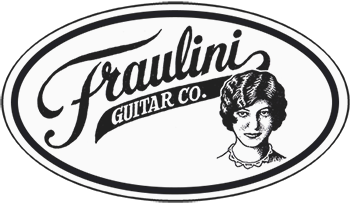
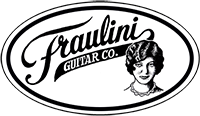

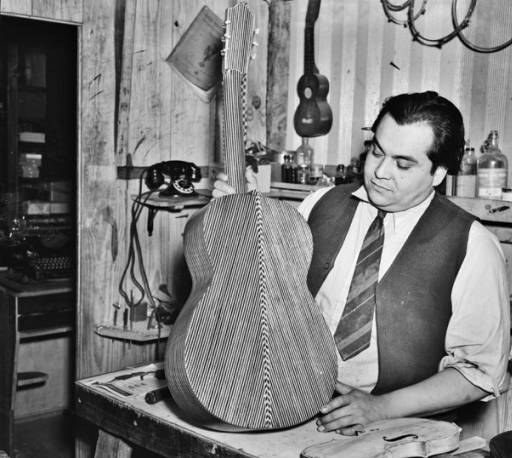
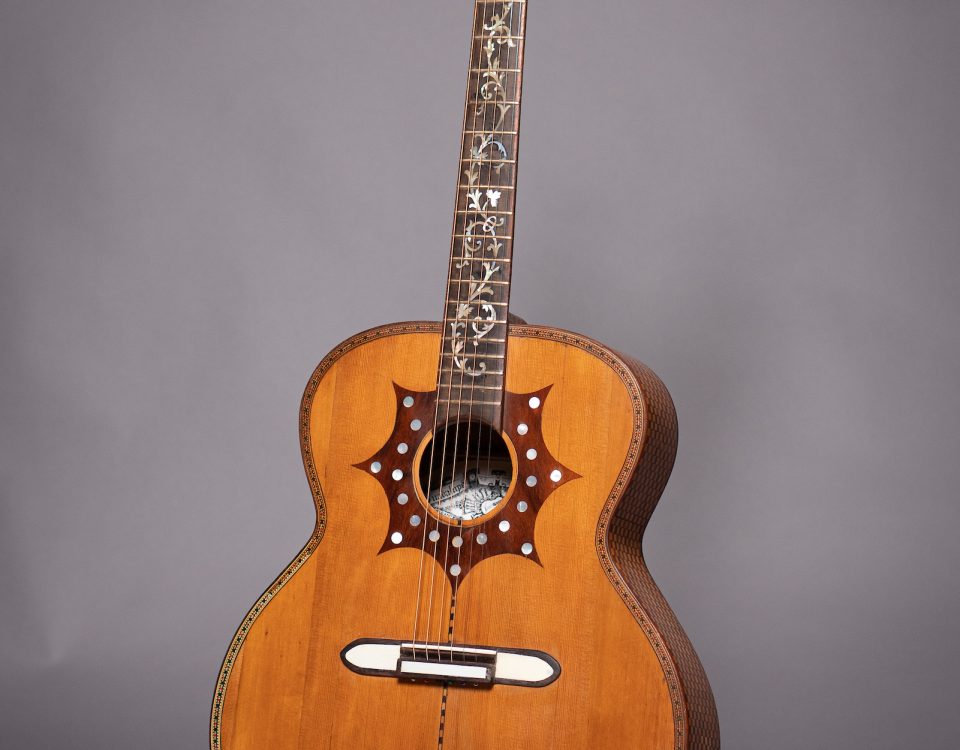

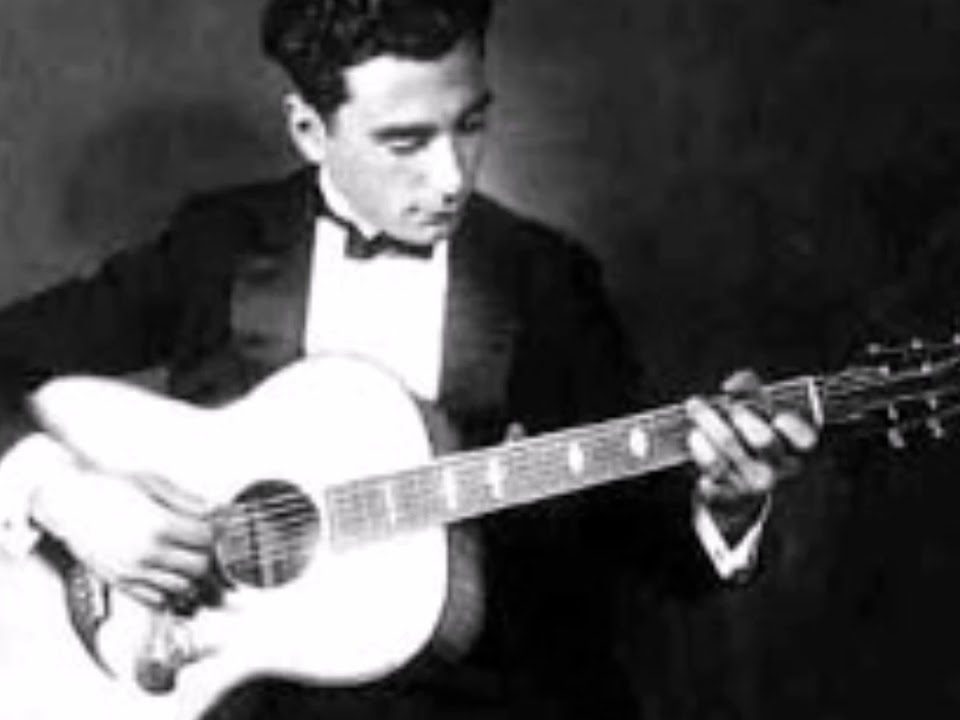
5 Comments
what brand of nickel strings???
~Dom
I just wanted to let you know I had a chance to play one of your guitars the other day — the new owner was worried about a few nicks or "defects" from the building process — that, my being someone who's around 1920s/30s guitars 24/7… could not even see if my life depended on it.
As for your guitar? Hot tamale!!! If that thing didn't knock the socks off the player they'd have to be a pretty cold fish.
So I'd just like to say — here's to you, sir! …and don't worry. People nitpick the quality of the finish on the guitars I generally sell… even the ones from the 1850s. It's the result of "catering to every whim" and not catering enough to what matters… or catering to common sense.
La Bella makes the strings custom for me. It was a buddies idea. We had some six and 12 string sets made up. The folks at La Bella are great!
Thanks Antebellum. I appreciate it. I call it "The Mark of the Hand!" It's proof that a person made something. It's all over the old stuff, but disappearing in our modern world.
Amen, Mr. Todd. — Jake
https://www.youtube.com/watch?v=9JzYjG_mmkg